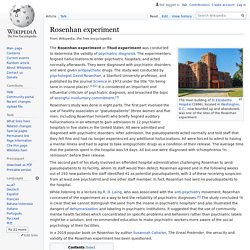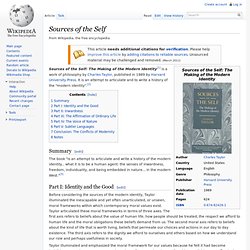

Impostor syndrome. Impostor syndrome (also known as impostor phenomenon, impostorism, fraud syndrome or the impostor experience) is a psychological pattern in which an individual doubts their accomplishments and has a persistent internalized fear of being exposed as a "fraud".[1] Despite external evidence of their competence, those experiencing this phenomenon remain convinced that they are frauds, and do not deserve all they have achieved.

Individuals with impostorism incorrectly attribute their success to luck, or as a result of deceiving others into thinking they are more intelligent than they perceive themselves to be.[2] While early research focused on the prevalence among high-achieving women, impostor syndrome has been recognized to affect both men and women equally.[1][3] Impostor phenomenon is not a mental disorder, yet there is research describing various management styles for this internal experience. History[edit] Download. Hypostatic model of personality. Matryoshka dolls provide a visual representation of the multiplicity and complexity of personality.

The work on subpersonalities was summarized by John Rowan in 1990.[2] The term hypostatic model was used by Codrin Tapu in 2001.[3] The model describes personality aspects and dimensions, as well as intra- and interpersonal relations. Not the person whole and alone, nor the relationship, but the relation between parts of person(s) is held as a central element that promotes both personal and social organization and disorganization. Personality is viewed as both an agency and a construction, along with its development and psychopathology, as the model is accompanied by specific methods of assessment and therapy, addressing each of the personality dimensions.
Historical background[edit] The relation between semantics and semiotics. Semiotics for Beginners: Introduction. Rosenhan experiment. Experiment to determine the validity of psychiatric diagnosis Rosenhan's study was done in eight parts.

The first part involved the use of healthy associates or "pseudopatients" (three women and five men, including Rosenhan himself) who briefly feigned auditory hallucinations in an attempt to gain admission to 12 psychiatric hospitals in five states in the United States. All were admitted and diagnosed with psychiatric disorders. After admission, the pseudopatients acted normally and told staff that they felt fine and had no longer experienced any additional hallucinations.
All were forced to admit to having a mental illness and had to agree to take antipsychotic drugs as a condition of their release. The second part of his study involved an offended hospital administration challenging Rosenhan to send pseudopatients to its facility, whom its staff would then detect. While listening to a lecture by R.
On Being Sane In Insane Places. On Being Sane In Insane Places David L.

Rosenhan How do we know precisely what constitutes “normality” or mental illness? Conventional wisdom suggests that specially trained professionals have the ability to make reasonably accurate diagnoses. Transpersonal psychology. Issues considered in transpersonal psychology include spiritual self-development, self beyond the ego, peak experiences, mystical experiences, systemic trance, spiritual crises, spiritual evolution, religious conversion, altered states of consciousness, spiritual practices, and other sublime and/or unusually expanded experiences of living.

The discipline attempts to describe and integrate spiritual experience within modern psychological theory and to formulate new theory to encompass such experience. Transpersonal psychology has made several contributions to the academic field, and the studies of human development, consciousness and spirituality.[3][4] Transpersonal psychology has also made contributions to the fields of psychotherapy[5] and psychiatry.[6][7] Definition[edit] Lajoie and Shapiro[8] reviewed forty definitions of transpersonal psychology that had appeared in academic literature over the period from 1968 to 1991. Development of the academic field[edit] Origins[edit] Dr.
Synesthesia. How someone with synesthesia might perceive (not "see") certain letters and numbers.

Synesthetes see characters just as others do (in whichever color actually displayed), yet simultaneously perceive colors as associated to each one. Synesthesia (also spelled synæsthesia or synaesthesia; from the Ancient Greek σύν syn, "together", and αἴσθησις aisthēsis, "sensation") is a neurological phenomenon in which stimulation of one sensory or cognitive pathway leads to automatic, involuntary experiences in a second sensory or cognitive pathway.[1][2][3][4] People who report such experiences are known as synesthetes. Difficulties have been recognized in adequately defining synesthesia:[5][6] many different phenomena have been included in the term synesthesia ("union of the senses"), and in many cases the terminology seems to be inaccurate. A more accurate term may be ideasthesia. Psychogenic.
Gerontology. Gerontology (from the Greek γέρων, geron, "old man" and -λογία, -logy, "study of"; coined by Ilya Ilyich Mechnikov in 1903) is the study of the social, psychological and biological aspects of aging.

It is distinguished from geriatrics, which is the branch of medicine that studies the diseases of older adults. Sources of the Self. Summary[edit] The book "is an attempt to articulate and write a history of the modern identity... what it is to be a human agent: the senses of inwardness, freedom, individuality, and being embedded in nature... in the modern West.
